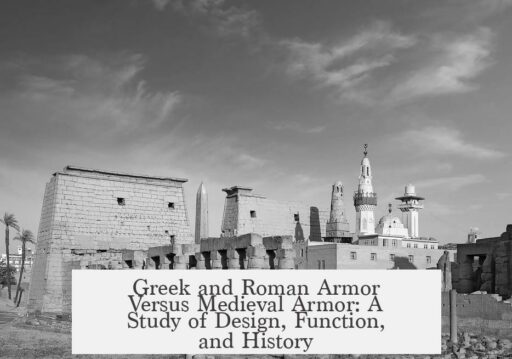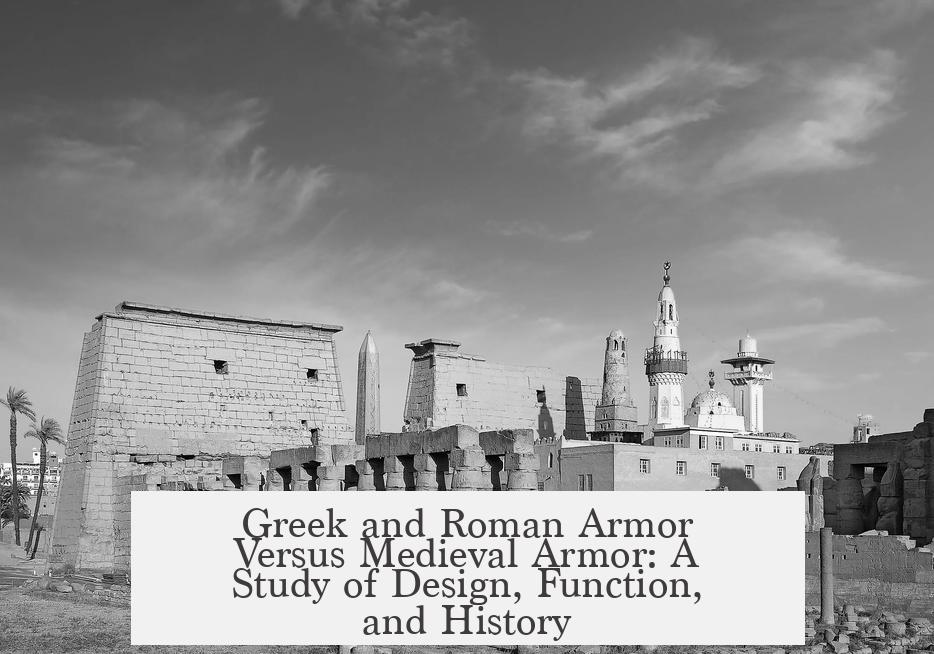Greek and Roman armor of the classical period differs from European medieval armor mainly in materials, coverage, production scale, and social context, with medieval armor generally offering greater protection and coverage due to advances in metallurgy and changes in warfare tactics.
Greek hoplite armor, common around 490 BC, relied heavily on bronze. Spartans and other hoplites wore bronze helmets, arm guards, leg guards, large wooden shields coated in bronze, and bronze breastplates. This armor balanced protection and weight but was heavy. Its shields were large, offering substantial defense during phalanx formations. However, mobility was limited compared to later developments.
Greek armor evolved over centuries. By the late classical period, flexible linen breastplates replaced rigid bronze for increased mobility, sacrificing some protection. Helmets shifted from the Corinthian style to more open and lighter types like Chalcidian and Pilos, optimizing battlefield awareness and movement but reducing full head protection.
Roman early legionaries initially used armor similar to Greek hoplites, supplied individually, leading to variable quality and protection levels. The Roman military transitioned from a levied army to a professional standing force, improving standardization and supply. The introduction of the Lorica Segmentata, made of iron plates linked for flexibility and coverage, symbolized this upgrade. However, disputes remain about its widespread use. Romans also used chainmail (lorica hamata) adopted from the Celts. Chainmail fit well, offered good protection, and was easier to maintain.
Roman helmets and shields also drew Celtic inspirations, improving functionality. Roman armor prioritized a balance of protection, mobility, and mass production capability to equip large armies. This differs from the medieval focus on individual knights.
Medieval armor began with mail hauberks and helmets, common around the early Middle Ages, similar in some respects to Roman chainmail but produced with differing techniques and scale. Over time, plate armor developed slowly, allowing comprehensive full-body coverage by the late 14th century. Medieval plate armor was heavier and more costly but provided unmatched protection and mobility for nobles and wealthy warriors.
Unlike Roman armor, medieval knights often discarded shields, relying on articulated plate harnesses designed to protect every body part. Plate armor was both protective and surprisingly mobile, typically weighing around 60 pounds, lighter than some modern military gear. The craftsmanship allowed knights to maintain agility during combat, disproving myths about clumsiness in full armor.
Early medieval armor emphasized cheaper, mass-producible designs usable by a wider range of warriors. Plate armor’s expense meant it was initially confined to elite nobles and successful mercenaries. Roman legions, by contrast, equipped thousands with relatively advanced armor, balancing protection with the ability to march and fight in tight formations.
Social and economic structures heavily influenced armor differences. Classical armies were supported by city-states or empires with greater capacity for armoring large forces. Medieval armor reflects feudal hierarchies and warfare changes, including the rise of cavalry dueling and individual combat. Metallurgy improved modestly from Roman times to the Renaissance, allowing better steel production and more intricate designs.
| Aspect | Greek and Roman Classical Armor | European Medieval Armor |
|---|---|---|
| Material | Bronze, iron, early steel; chainmail (Roman adoption from Celts) | High-quality steel plate, chainmail; advanced metallurgy |
| Coverage | Large shields, bronze breastplates; often arms and legs less protected | Full body coverage with articulated plate; less reliance on shield |
| Protection | Good protection against spear and arrows; vulnerable without shield | Superior protection against many weapons; plate resists piercing and cutting |
| Weight & Mobility | Heavier bronze plates; reasonable mobility with shield | Weight distributed evenly; designed for high agility |
| Social/Economic | Standardized gear for large standing armies; supplied by state or self | Expensive elite armor for nobles; cheaper armor for levies |
| Production | Individual or state supply; sometimes variable quality | Advanced metalworking; labor-intensive plate armor for select few |
Both periods used armor designed for their military tactics. Classical armies fought in tight formations relying on shields and coordinated spear thrusts. Mobility and shield use were critical. Medieval warfare increasingly valued individual protection and shock combat, leading to plate harnesses. Roman armor emphasized balance for mass armies; medieval armor focused on maximizing individual defense.
The evolution from bronze to iron and steel helped increase protection progressively. Classical metallurgy was impressive but limited by material availability and technology. Medieval armor development benefited from existing knowledge, allowing full plate coverage and mobility.
- Greek hoplite armor used bronze plates and large shields; later shifts favored linen for mobility.
- Roman armor introduced chainmail and advanced to standardized plate segments (Lorica Segmentata).
- Medieval armor evolved to full plate, maximizing body coverage and protection.
- Medieval plate armor was costly and reserved for elites, while Roman armor was more widely supplied.
- Medieval plate armor offered better mobility than commonly believed, often lighter than modern gear.
- Differences reflect military tactics, economic resources, and social structure more than raw material quality.
How Does Greek and Roman Armor of the Classical Period Compare to European Medieval Armor?
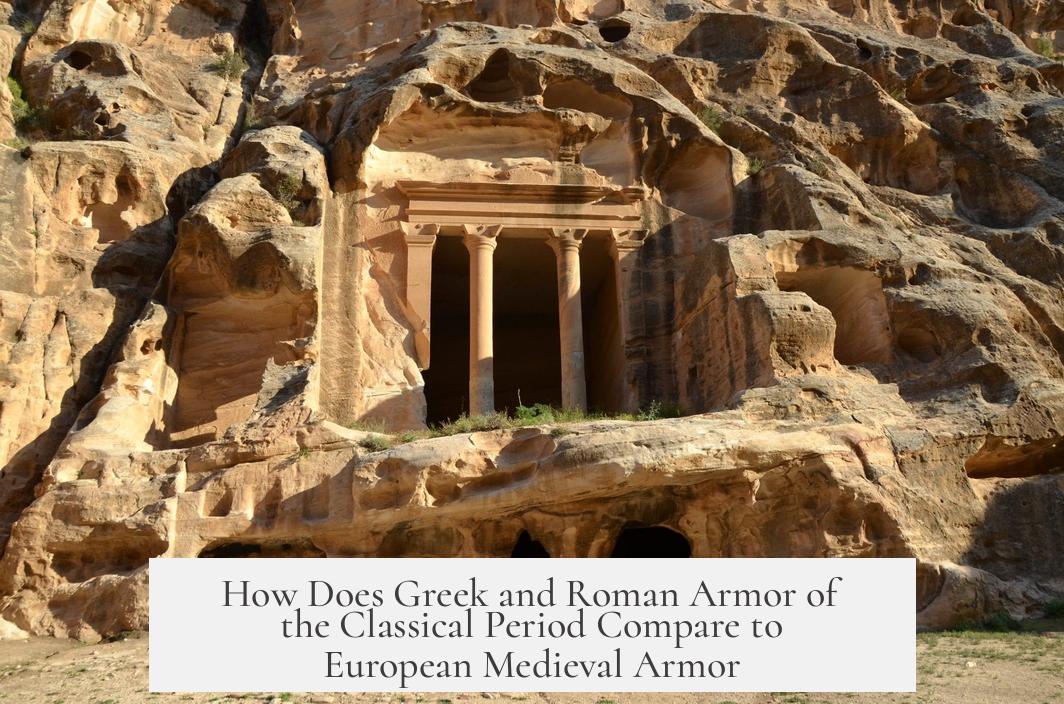
Greek and Roman armor of the classical period differ significantly from European medieval armor in terms of materials, design, protection, and social context, yet they share a common goal: to protect the wearer effectively on the battlefield. Let’s dive into the nuances of these armors and uncover what made each era’s warriors ready for war—or at least less likely to get scalped.
If you’ve ever seen a movie like 300, the image of the Spartan hoplite with bronzed muscles gleaming in the sun might come to mind. But real-life classical Greek and Roman soldiers had armor that was functional, varied, and adapted to their specific warfare styles. Medieval knights, on the other hand, wore armor borne from centuries of metallurgical advances and changing battle tactics.
The Greek Hoplite: Bronze, Bulk, and Bravery
The typical Greek hoplite around 490 BC was a heavily armored infantryman. Contrary to some stylized depictions, these soldiers didn’t just wear helmets and shields—they sported bronze helmets, arm guards, bronze leg guards, and a bronze breastplate. Their large wooden shields were coated with bronze, creating a formidable barrier in phalanx formations.
This armor was designed to protect against the long spears of enemy hoplites, which often broke in combat. Battle was more about pushing and shield-to-shield contact than hacking through steel plate. The hoplite’s protection was enough to dominate less-armored foes like the Persians at Marathon, who mostly carried wicker shields and wore little to no armor.
Over time, Greek armor evolved. Plate breastplates gave way to flexible linen armor to improve mobility, and helmet designs shifted—from the famous Corinthian helmets to lighter Chalcidian and Pilos types—balancing protection with the wearer’s need to see and move freely.
Roman Armor: From Bronze to Iron & Chainmail Innovation
Early Roman soldiers resembled the hoplites in armor and tactics, but Rome’s military evolution accelerated with the introduction of chainmail, inspired by Celtic designs. Initially, Roman armor was variable in quality since soldiers supplied their own gear. Poorer soldiers might have just wooden shields and slings, highlighting economic disparities within the ranks.
With the transition to a professional standing army, the Roman state started supplying standardized armor. One iconic example is the lorica segmentata, made of iron strips arranged to allow a balance between protection and mobility, though it required intense maintenance.
The Romans also used the lorica hamata (chainmail) and lorica squamata (scaled armor), which offered good protection with different trade-offs related to weight and flexibility. Much of this Celtic influence—helmets, shields, steel metallurgy—became embedded in Roman military gear.
Medieval Armor: The Plate Revolution and Social Statement
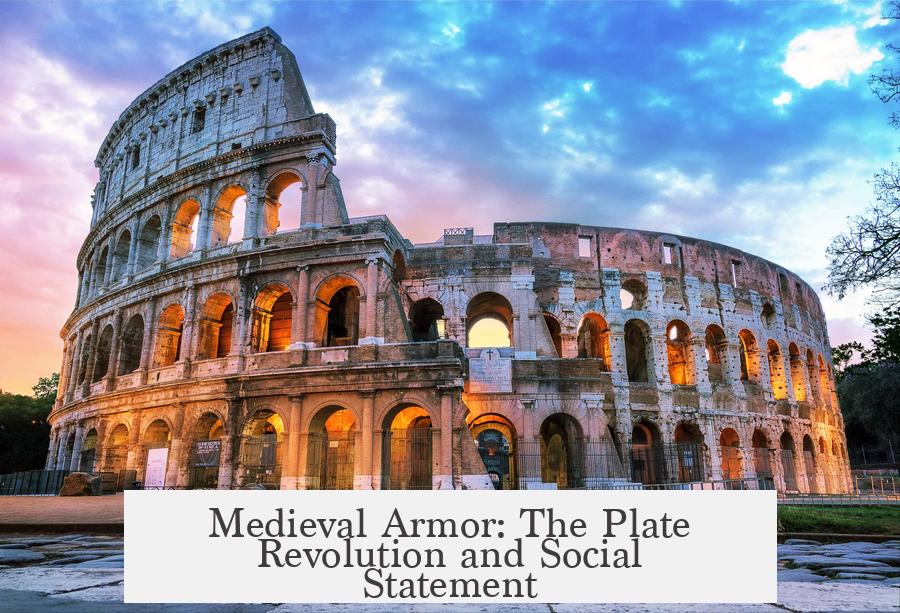
Jumping ahead several centuries to medieval Europe, armor had to adapt to new weapons and combat styles. Early medieval armor was often cheap and low maintenance but generally offered less protection than Roman armor. Chainmail was widespread, much like in classical times, but technological advances eventually enabled the manufacture of full plate armor.
This full plate armor, emerging in the late 14th century, was a quantum leap in terms of coverage and personal protection. Unlike classical armor designed for mass armies, medieval plate was often custom-made for wealthy knights or elite warriors. It covered the entire body, allowed surprising freedom of movement, and its cost was astronomical.
Interestingly, medieval armor wasn’t as clunky as pop culture suggests. A full suit weighed roughly 60 pounds (27 kg), lighter than the 90 pounds modern soldiers carry. The weight was evenly distributed, allowing knights to sprint, mount horses unassisted, and perform combat maneuvers effectively.
Comparing Protection and Mobility
So, who had the better armor? The short answer: medieval plate generally provided superior protection. It shielded the wearer from arrows, swords, and blunt force more comprehensively than Greek bronze or Roman chainmail. Medieval knights could withstand blows that would penetrate classical armor, unless an enemy targeted vulnerable spots like the eye slits in helmets.
Roman soldiers, especially legionaries wearing lorica segmentata, balanced protection with mobility and mass production needs. Their armor often left the arms and legs more exposed than medieval plate did because their defensive emphasis was on their large shields working in concert with their armor. The Greek hoplites’ massive shields also offered significant protection when forming a phalanx but left them vulnerable without their protective bulwark.
Regarding mobility, the light bronze armor of Greek hoplites was less flexible than the later linen armor they adopted, and both were less adaptable than Roman iron plate or chainmail. However, the mobility offered by classical armor was suited to their close-formation, spear-based fighting style. Medieval plate armor allowed knights to fight individually or in smaller groups, with weapons designed to exploit the armor’s weak points.
Economic, Social, and Tactical Contexts Matter
| Aspect | Greek & Roman Armor | Medieval Armor |
|---|---|---|
| Material | Bronze, iron, chainmail (Roman adoption from Celts) | Steel plate, chainmail |
| Protection | High protection for the time, large shields crucial | Extensive full-body protection, especially for knights |
| Flexibility | Relatively good mobility with later flexible linen; more rigid bronze plates earlier | Surprisingly good mobility; suits evenly distributed weight and allowed agile combat |
| Cost & Accessibility | Varied, sometimes self-supplied; expensive and artisan-crafted; levies less equipped | Early armor cheap but less protective; plate armor extremely costly and exclusive |
| Battle Role | Mass formations (phalanx, Roman legions); combined shield and armor defense | Mix of mass armies and individual duelling nobles; armor critical for personal combat |
One must remember the socio-economic factors influencing armor design. Classical Greek and Roman armies reflected their societies: citizen-soldiers with personal wealth differences, levied troops, and later professional armies supplied by the state. Medieval Europe had feudal structures, where the elite invested heavily in personal armor that also acted as a social status symbol.
For example, the Roman Empire outfitted hundreds of thousands of soldiers with lorica segmentata or chainmail—rock-solid yet suited to mass production. Meanwhile, medieval full plate armor was a luxury of the rich. A Roman or Greek soldier seeing a Gothic plate mail suit would be astonished at the expense and craftsmanship involved.
A Story from the Battlefield: The Clash of Shields and Steel
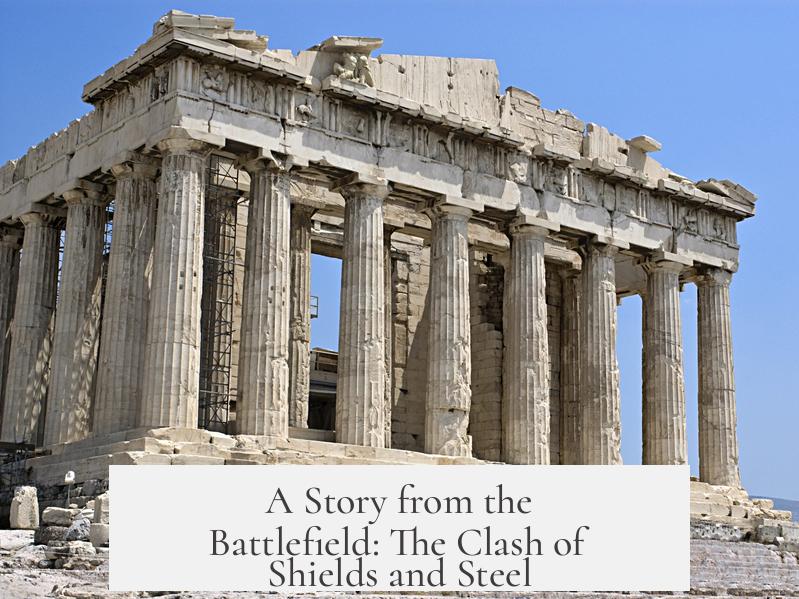
Picture a Roman legionnaire and a medieval knight meeting in an imaginary time-travel duel. The Roman comes clad in lorica segmentata, a sturdy helmet, and his towering scutum shield. The knight is decked in full plate armor, no shield, relying on the sleek slate of interlocking steel plates and a true playground of weapons designed to pry open defenses.
The Roman leans heavily on his shield, deflecting blows, but his exposed limbs and heavier armor can be exploited. The knight moves nimbly, strikes targeting visor openings or leg joints. This battle illustrates how medieval armor’s evolution leaned toward individualized protection and mobility, while classical armor was about formation defense.
Tips for History Buffs and Reenactors
- For reenactors seeking authenticity: Greek hoplite armor requires a large shield to feel true to form. Bronze breastplates and arm guards add heavy but crucial realism.
- Roman legionary costumes: Incorporate the segmented armor and chainmail along with a scutum for better authenticity than just ‘Roman helmet plus tunic.’
- Medieval knight enthusiasts: Experiment with chainmail hauberks before moving onto full harness suits to appreciate early medieval armor’s practicality and progression.
- Compare armour maintenance: Medieval plate requires less constant upkeep than Roman lorica segmentata, which was known to be high-maintenance.
Final Thoughts: Armor Reflects More Than Battle Needs
Ultimately, Greek, Roman, and medieval armors are all solutions crafted for their times. The Greeks focused on collective shield walls supported by robust bronze armor. Romans incorporated chainmail and segmented plates, balancing mass army requirements and protective needs. Medieval Europe developed personalized, ornate suits of plate armor, emphasizing individual protection and status.
The evolution from bronze to iron and steel, from fixed plates to flexible mail and full plate, mirrors advances in technology, fighting styles, and social structures. And while they all aimed to protect, armor also sent messages — of power, wealth, and identity on the medieval battlefield or the classical phalanx.
Have you wondered how armor influenced soldier morale? Or how wearers felt about trading mobility for protection? Next time you watch a historical epic or visit a museum, see if you spot these subtle but striking differences in armor that speak volumes about warriors’ worlds long gone.
